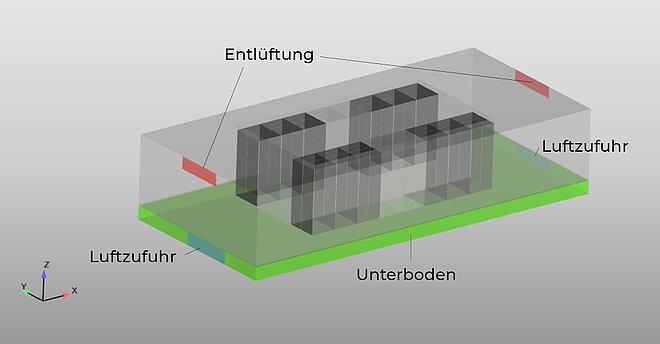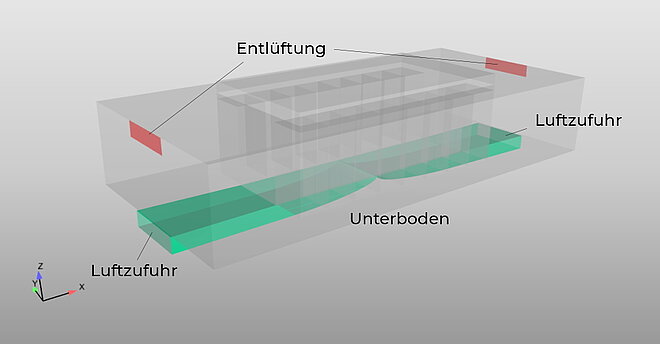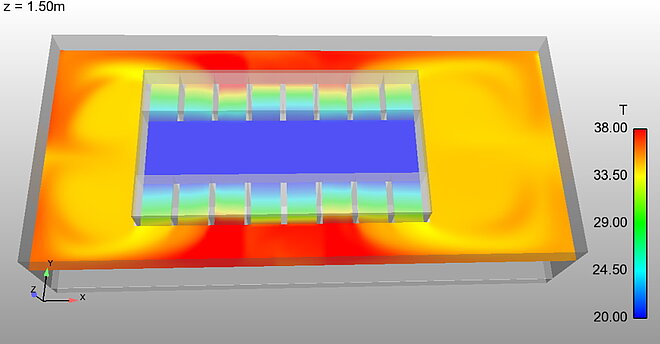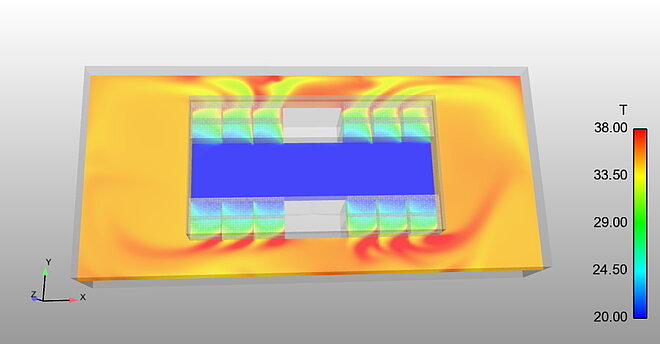Optimized air conditioning of data centers

The performance and energy requirements of servers and data centers are increasing exponentially, as is the amount of heat generated and the need for effective cooling. Engineering simulation calculations are used to create intelligent cooling concepts for data centers, which also enable noticeable energy savings. According to Merkle CAE Solutions, preliminary planning as well as subsequent optimizations using CFD pay for themselves quickly.
For servers to work well, they need to stay cool. An increase in room temperature of just nine degrees (22 degrees to 31 degrees) can lead to a 50% drop in performance. This is noticeable in terms of speed, possible downtime and data loss.
Cold aisle containment in a server farm ensures that cold air is directed to the server racks, separated from the warm air flowing away again. This prevents warm air from being drawn in again and thus the potential formation of hot spots.
CFD simulation is now used to simulate the flow and temperature behavior of the cold and warm air. Based on the data obtained, spatial factors or the ventilation systems can be optimized and energy costs reduced. For this purpose, the entire room with supply and exhaust air, including the cold and warm aisles as well as the heat and associated flow formations, is mapped.
Based on the findings from the simulation, the geometries of the cold and hot aisles as well as the supply and exhaust air can be changed in such a way that a reduction in the required air mass flow is achieved - while at the same time optimizing the cooling.
In CFD calculations already carried out, Merkle CAE Solutions achieved a reduction in the required air volume flow of around 7 % by optimizing a data center accordingly.
A server with an output of 90 kWh requires 788,000 kWh of energy per year, similar to an air conditioning system. A saving of 7% would therefore save 55,000 kWh per year. With an electricity mix, this means that the CO2 saved (420 g/kWh) amounts to 22 tons.
At the same time, the racks are cooled more evenly. This in turn significantly reduces the power consumption of the air conditioning unit. The air conditioning system can be designed to be smaller and more efficient, resulting in significant investment and energy savings.
"Optimizations based on engineering simulations are not only essential for large data centers. Energy prices are unlikely to fall. Neither will the performance of server farms. Well thought-out cooling strategies are a valuable tool for optimizing costs, but also for ensuring the operability of data centers," says Dipl.-Ing. (TU) Stefan Merkle, Managing Partner of Merkle CAE Solutions GmbH.




